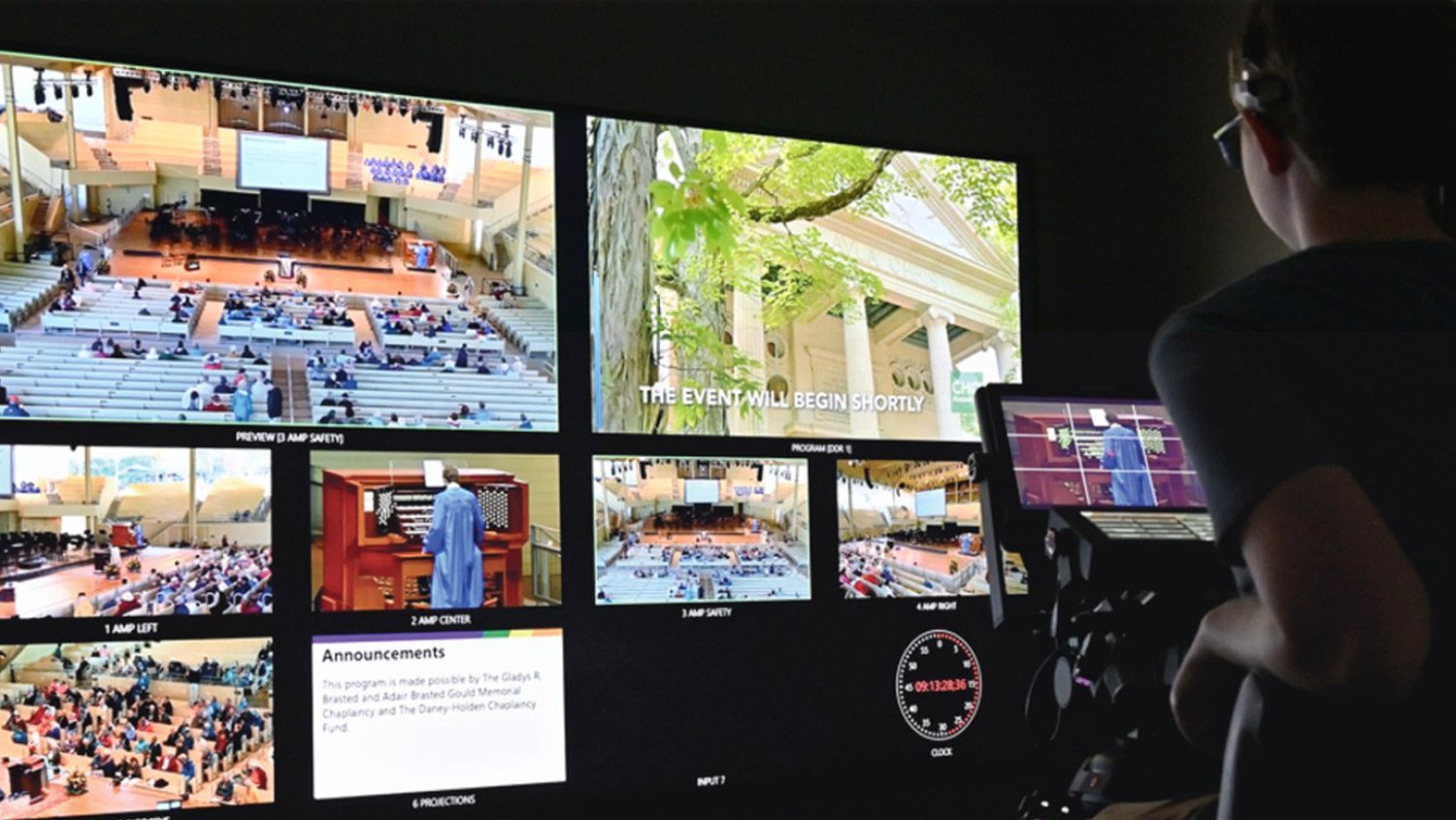Raising the Bar:
RCT Fluid Remote and Canon CRN Series for Remote Broadcasting
Chautauqua Institution recently integrated Remote Camera Technology’s FR-1 Fluid Remote into our broadcast system for CHQ Assembly, the streaming channel and content marketing arm of the organization. This control system, paired with Canon’s CRN line of professional PTZ cameras, dramatically improved our camera operation workflow, capture strategy, and visual product of live and post-produced events.
The Challenge
Our previous iterations of camera control struggled with limited functionality, additional workload, and unique talent requirements for camera operation. Particularly during live, high-pressure events, camera operation was often a ceiling for production quality. We needed a solution so we could hire talented operators to control multiple cameras seamlessly and ensure tactile ergonomics, offering a viewing experience that only professional broadcast cameras could previously produce.
Why the FR-1 Fluid Remote
After evaluating our needs and limitations, several options and iterations of our system offered increased camera control. We chose the FR-1 Fluid Remote due to its advanced features — such as real-time hands-on control of PTZ, focus, and shading — so the operator felt like they were standing behind a multiformat system. RCT’s customer support, company story, and dedication to innovation and reliability made the FR-1 an ideal choice for our needs.
Problem Statement
Our existing PTZ cameras and workflow for control was becoming a creative and experiential bottleneck in our production workflow.
Issues included:
• Workload and Hiring: We ran into a parallel issue where experienced camera operators would potentially fall outside the scope of our position as the operation of PTZ cameras requires different skills and experience compared to a multiformat operator. The camera control operator would often find themselves using a standard tabletop PTZ control surface or, even worse, our technical director would receive the dual task of camera operation and video switching. This caused extra stress, increased error, and decreased bandwidth for focus on capture strategy.
• Limited Control: An outdated UI made it difficult for operators to find and adjust settings on the fly. There was an inability to find where lens zoom and digital zoom crossed over, creating additional noise and degraded image quality, limited shading and color settings, and a legacy video transport protocol. The settings available within the cameras were often difficult to adjust with regular PTZ control surfaces, leaving shading, focus, and specific exposure settings unavailable to our director and accessible only via multitasking through browser control.
• Mechanical Build: The previous system did not allow for realistic camera movement during broadcast and capture. Our original camera system had much smaller sensors, lower quality motors for natural/smooth pan and tilt movement, and no in-body or optical stabilization. These challenges led to missed or unusable shots and compromised the overall production quality.
Solution Overview
RCT was selected for their ability to address our specific needs, particularly for its real-time, physical, multi-camera control of PTZ operation and user-friendly interface.
RCT President Peter Desjardins takes on not only the leadership role for his company, but also serves as the first point of contact for support and training for his customers. He has built strong relationships with some of the largest names in camera technology and can work with global teams to innovate and produce results.
Michael W. Earle
Marketing and Production Systems Architect - Chautauqua Institution
Company Background
Chautauqua Institution, based in Chautauqua, New York, is a not-for-profit education center and summer resort for adults and youth, founded in 1874. The 800-acre campus features a nine-week summer season to offer experiences in areas of music, arts, religion, recreation, and pursuit of knowledge. The nine-week summer season consists of approximately 7,500 persons in residence and a total of more than 100,000 attend scheduled public events. As part of the organization’s strategic plan, 150 forward, the CHQ Assembly streaming platform was created and has continually sought out enhancements in technology and workflows to deliver high-quality, best-in-class live broadcasts for over 150 lectures and performance events every year.


